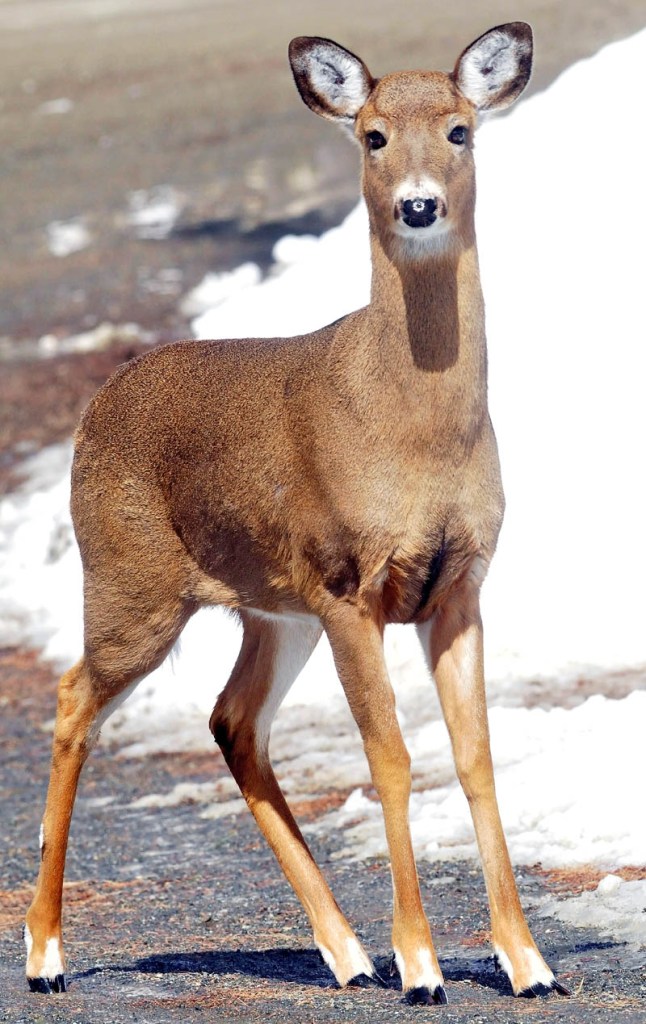Two things my father taught me about driving when I was a teenager have stuck with me and served me well over the years:
If someone in front of you starts driving erratically, back way off and keep your distance. And when you are driving at night, particularly in a rural area, scan the sides of the road constantly, back and forth, and watch for deer.
If one crosses your path, expect another one to be right behind it.
It’s kind of like the advice my high school driver’s ed teacher gave me: When you see a ball roll into the road, expect a child to be chasing it.
These vital pieces of advice come back to me now, as I’m hearing more and more people say they nearly hit a deer.
While being vigilant has saved me from collisions many times, the reality is that sometimes there’s just nothing you can do to prevent it.
Years ago I struck a deer late one night while driving on West Ridge Road in Cornville.
It was during the days when we newspaper reporters had very late deadlines, so driving at midnight wasn’t unusual.
A deer ran out of the woods and into the narrow road. I tried to swerve to avoid it, but to no avail. The thud against the grill and flying fur in the headlights was frightening. It was a terrible feeling.
The poor deer hobbled off into the woods as I pulled to the side of the road and into a nearby driveway.
I could find no sign of the deer, which gave me hope it wasn’t hurt too badly and would survive.
With a flashlight, I inspected the damage, which turned out to be a twisted grill stuffed with deer fur. Only after a visit the next day to the auto repair shop did I learn I needed a new radiator.
Right after the accident, I was lucky to have found a house with the lights on, and even luckier that the kind woman invited me in and let me use her phone to call the sheriff’s department. We did not have cellphones in those days.
Fortunately, my car was driveable and needed minimal repair. Other people aren’t so lucky.
A moose struck a co-worker’s car one night many years ago, totaling the car and sending my critically injured colleague via helicopter to the hospital. Fortunately, he survived, but it was a long recovery.
We really need to be mindful of wild animals as the cool air sets in, hunting season approaches and deer are running.
Expecting them to be out there should be as much a part of our consciousness as tying our shoes in the morning
I was talking recently with Waterville police Officer Steve Brame about car-deer accidents, and he agreed it can happen to anyone. In August he was driving to work early one morning on Garland Road in Winslow, and a deer suddenly appeared and ran into the road, he said.
“I was able to react in time, and the deer continued running. But they can come out from behind bushes at a dead run, and you won’t even have time to react. You don’t know what’s chasing it or what caused it to run. You’ve just got to stay alert and do the best you can,” he said.
He advised slowing down, especially at dawn and dusk.
“The faster you speed, the lower your reaction time,” he said.
Last year, the number of vehicle-deer accidents reported in Maine was 2,837, up from 2,744 in 2011 and 2,626 in 2010, according to statistics from the state Department of Transportation.
Duane Brunell, safety performance analysis manager at the department’s safety office, said we are entering a season of greater deer presence, which will continue for the next several months. Vehicle collisions with large animals occur more frequently at night, he said.
The department advises that if you are unable to avoid such a collision, apply your brakes, let up on them just before impact, try to hit the tail end of the animal and if possible, duck to minimize injury.
I believe that this, combined with my father’s words of wisdom, make for some darned good advice.
Amy Calder has been a Morning Sentinel reporter 25 years. She may be reached at acalder@mainetoday.com.
Send questions/comments to the editors.




